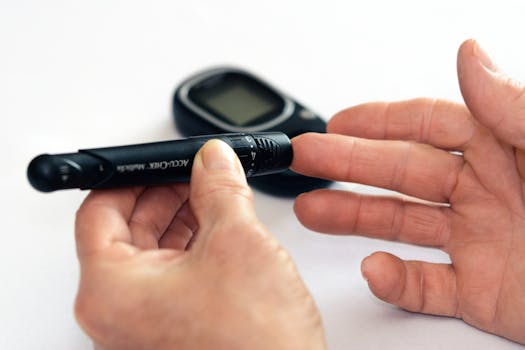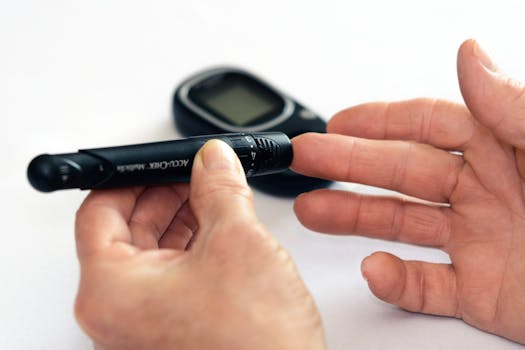A Complete Guide to Balancing Blood Sugar Levels
This Balancing Blood Sugar Levels: Complete Guide explains practical strategies you can use today to reduce spikes and dips, support long-term metabolic health, and answer questions like how to improve fasting blood sugar and how to keep blood sugar stable throughout the day. Stable glucose supports energy, mood, and reduces long-term risk for diabetes-related complications.
Why blood sugar balance matters
Blood glucose fluctuates naturally after meals, during exercise, and in response to stress. When those swings become large or frequent, they can lead to fatigue, poor concentration, cravings, and over time to insulin resistance. Small changes in diet, activity, and timing can make a big difference in smoothing those swings and improving overall wellbeing.
Key principles for steady glucose
- Focus on whole foods: Prioritize vegetables, lean proteins, whole grains, legumes, nuts, and seeds to provide fiber and protein that slow carbohydrate absorption.
- Balance meals: Combine carbohydrates with protein and healthy fats to blunt rapid post-meal spikes.
- Mind portion sizes: Large portions of starchy foods or sugary drinks will raise glucose more than modest portions paired with protein and fiber.
- Regular movement: Short walks after meals and consistent aerobic and resistance exercise improve insulin sensitivity.
How to improve fasting blood sugar
Fasting blood sugar reflects what your body does overnight and is influenced by evening meals, sleep quality, and medication when applicable. Practical steps include avoiding late-night high-carb snacks, eating a balanced dinner with protein and vegetables, and keeping a consistent sleep schedule. If you have elevated fasting numbers despite lifestyle changes, review medications and timing with your healthcare provider.
Practical meal and snack ideas
Choose snacks that combine macronutrients: Greek yogurt with nuts, apple slices with almond butter, or hummus and raw veggies. For meals, consider a template: half nonstarchy vegetables, one quarter lean protein, one quarter whole-grain or starchy vegetable, plus a serving of healthy fat. These patterns help maintain energy and reduce cravings between meals.
Timing and activity strategies
Post-meal activity is a simple, evidence-backed way to reduce peak glucose. A 10–30 minute walk or light activity after eating can significantly lower postprandial levels. Consistent resistance training improves muscle glucose uptake and helps with how to keep blood sugar stable over months. Avoid long periods of sedentary time; break them with brief standing or walking breaks.
Sleep, stress, and other modifiable factors
Poor sleep and chronic stress increase hormones like cortisol that raise blood sugar. Prioritize 7–9 hours of quality sleep, practice stress-reduction techniques (deep breathing, brief mindfulness, or progressive muscle relaxation), and consider daily routines that reduce evening screen time. Small changes here often show up as measurable improvements in fasting and daytime glucose control.
When to seek professional guidance
If self-care steps don’t achieve desired results, or if you experience frequent high readings, symptoms of low blood sugar, or are on blood-glucose-lowering medications, consult a clinician. A registered dietitian, diabetes educator, or endocrinologist can tailor plans, adjust medications, and help interpret patterns from continuous glucose monitors or logs.
For an in-depth review of diabetes types and broader treatment strategies that complement the habits above, consult this resource: descriptive anchor text.
For reliable, evidence-based guidance on managing blood sugar and diabetes, see the CDC overview on managing diabetes: https://www.cdc.gov/diabetes/managing/index.html.
Tracking progress without obsession
Use simple metrics: energy, sleep quality, weight trends, and periodic glucose checks if recommended. Avoid over-frequent testing unless advised; instead build habits and reassess every few weeks. Small, sustainable changes beat extreme short-term measures for long-term stability.
- Prioritize balanced meals (protein, fiber, healthy fats) and regular movement after eating.
- Improve evening habits and sleep to lower fasting glucose over time.
- Use consistent, modest exercise and resistance training to enhance insulin sensitivity.
- Track trends and seek professional support when needed, especially if on medications.
FAQ
How quickly can I expect improvement?
Many people notice better post-meal energy and fewer cravings within days to weeks after changing meals and adding short walks. Meaningful reductions in fasting glucose and HbA1c typically take several weeks to months depending on baseline levels and consistency.
Are low-carb diets necessary to stabilize blood sugar?
Not necessarily. Low-carb approaches can help some people, but balanced meals with appropriate portions, fiber, and protein are effective for many. Choose an eating pattern you can maintain long-term and that meets your medical needs.






